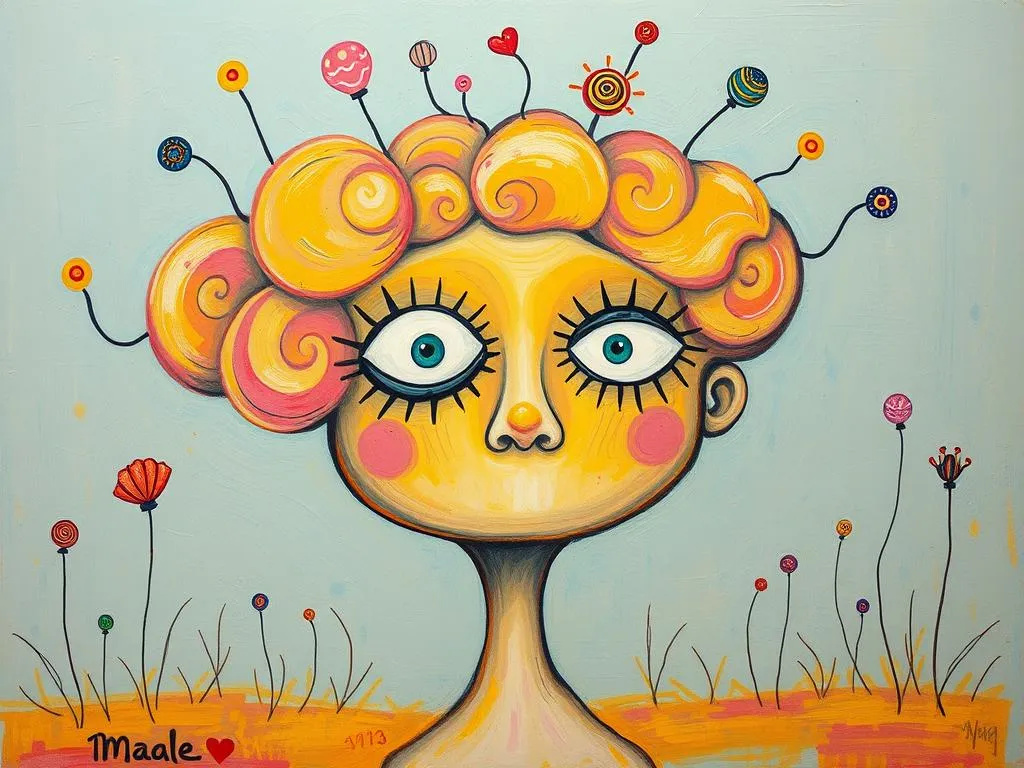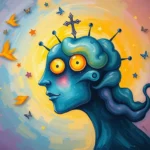
Have you ever woken up from a dream feeling disoriented or even frightened, only to realize it was a vivid portrayal of your innermost fears and anxieties? Dreams can often serve as a window into our subconscious, revealing the complexities of our mental landscape. Among these complexities, symbols related to mental instability can emerge, reflecting deeper struggles and emotional states that we might not fully acknowledge during our waking hours.
In this article, we will explore the symbols associated with mental instability, share common scenarios that paint a picture of these dreams, and provide actionable insights to help you harness the power of your dreams for personal growth. Join me on this journey into the realm of dreams where we will decode the signs and symbols that may be pointing you toward greater self-awareness.
Shadows of the Mind: Decoding Mental Instability Symbols
When it comes to dreams centered on mental instability, the symbols often manifest as reflections of our emotional states, life stressors, or unresolved issues. Understanding these symbols can offer profound insights into our psyche. Here are a few key symbols to consider:
-
Broken Mirrors – A broken mirror in a dream can signify a fragmented sense of self or identity. It often represents feelings of insecurity, self-doubt, or a struggle to see oneself clearly. If you dream of shattered glass, it might indicate that you are grappling with aspects of your identity that feel unstable or misunderstood.
-
Labyrinths or Mazes – Dreaming of navigating through a maze can symbolize confusion or feeling trapped in your circumstances. It reflects the complexity of your thoughts and emotions, suggesting that you may be struggling to find clarity or direction in your life. This symbol can also point to feelings of being overwhelmed by choices or decisions.
-
Falling – Falling dreams are common and can be linked to feelings of loss of control or fear of failure. This symbol often arises during times of stress or uncertainty, representing a fear of losing grip on reality or a sense of stability. It can be a wake-up call to address areas in your life where you feel ungrounded.
-
Dark Clouds or Storms – Weather-related symbols often reflect emotional turmoil. Dark clouds or storms in your dreams can signify inner chaos or a brewing crisis. Such imagery points to unresolved emotional conflicts that may be threatening to overwhelm you, suggesting that it might be time to confront and process these feelings.
-
Empty Rooms or Hallways – Dreaming of wandering through empty spaces can evoke feelings of isolation or abandonment. These symbols may signify a disconnect from your surroundings, reflecting emotional states such as loneliness or feelings of being lost. They can also indicate a need for introspection and self-reflection.
Recognizing these symbols and what they represent can help you better understand your emotional state. They are not merely random images but rather poignant reflections of what lies beneath the surface. By taking the time to analyze these symbols, you can unlock the messages your subconscious is trying to convey.
Walking the Tightrope: Scenarios of Mental Instability Dreams
Dreams often encapsulate our personal experiences, manifesting our fears and anxieties in ways that can resonate deeply with us. Here are a few common scenarios that might reflect feelings of mental instability:
-
Endless Exam: Imagine dreaming that you are sitting for an exam, but no matter how hard you try, you can’t seem to answer any of the questions. This dream may represent feelings of inadequacy or the pressure to perform in waking life. It might point to underlying anxiety related to work, relationships, or personal expectations.
-
Lost in a Crowd: You find yourself in a bustling crowd, yet you feel completely alone. This dream scenario often signifies feelings of isolation or a lack of connection. You may be grappling with social anxiety or struggling to find your place in your community or relationships.
-
Voices in the Dark: In this unsettling dream, you hear disembodied voices whispering secrets or criticisms. This can represent your inner dialogue or self-criticism that often goes unnoticed. It’s a powerful reflection of how our internal thoughts can influence our mental state, serving as a reminder to cultivate self-compassion.
-
Anxiety-Inducing Heights: You dream that you are standing on a ledge, teetering over a vast drop. This dream signifies a fear of taking risks or making significant changes in your life. It often reflects feelings of vulnerability and the fear of failure, urging you to confront what holds you back.
-
Chasing Shadows: In this dream, you are being pursued by indistinct figures or shadows. This scenario can symbolize repressed emotions or fears you are trying to escape. It may indicate that there are unresolved issues in your life that you need to confront instead of running away from them.
Each of these scenarios carries its own weight, reflecting the myriad challenges we face in our waking lives. By examining these dreams, you can gain insight into your mental state and identify areas where you may need to focus your energy or seek support.
Rebuilding the Mind: Harnessing Dreams for Personal Growth
Understanding and interpreting dreams related to mental instability can be a powerful tool for personal growth. Here’s how you can leverage your dream insights to foster a healthier mental state:
-
Journaling: Keep a dream journal to record your dreams as soon as you wake up. Note down prominent symbols, feelings, and scenarios. This practice can help you track recurring themes and patterns, providing clarity on your emotional landscape. Reflect on how these dreams connect to your waking life and what they might be urging you to change.
-
Mindfulness and Meditation: Engage in mindfulness practices or meditation to help ground yourself. This can assist in managing anxiety and cultivating a deeper awareness of your thoughts and feelings. By creating space to process your emotions, you may find it easier to confront the issues that surface in your dreams.
-
Seek Support: If your dreams are consistently distressing, it might be helpful to talk to a trusted friend or mental health professional. Sharing your experiences can provide relief and help you gain new perspectives on the challenges you face. Remember, reaching out for help is a sign of strength, not weakness.
-
Embrace Change: Use your dreams as a catalyst for change. If you find recurring symbols or themes, consider what steps you can take to address the underlying issues. Whether it’s setting new goals, reevaluating relationships, or seeking new experiences, embracing change can lead to personal growth and emotional healing.
-
Creative Expression: Channel your dream experiences into creative outlets such as art, writing, or music. This can serve as a therapeutic tool to express emotions that may be difficult to articulate. Creativity can also provide a sense of release and clarity, allowing you to process complex feelings more effectively.
As you move forward, keep in mind that dreams are an invitation to explore the depths of your psyche. They hold a mirror to your inner world, urging you to confront your fears and embrace your vulnerabilities.
Reflecting on these symbols and scenarios can illuminate paths toward healing and growth.
In the grand tapestry of life, our dreams can often feel like threads of insight woven into our consciousness. By paying attention to the symbols of mental instability, we can reclaim our narratives and empower ourselves on our journey towards self-discovery and emotional well-being.
The next time you find yourself tangled in the web of unsettling dreams, remember: your subconscious is speaking. Listen closely, for it may just be guiding you toward the clarity and strength you seek.







